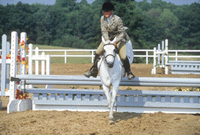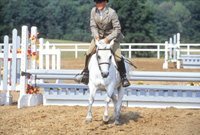Tamron AF 28 to 200mm Super Zoom f3.8-5.6 Aspherical XR (IF) Macro
The Worlds Best Selling Zoom Lens Gets Another Upgrade
|
The best-selling zoom lens in history, Tamron's 28-200mm debuted in 1992. Since then, it has been redesigned and upgraded in 1996, in 1999, and again in 2001. This most recent (fourth-generation) model benefits from significant downsizing, making it the smallest and lightest 28-200mm zoom that we know of that's on the market today. The change is significant indeed when compared to the already compact previous model, the 28-200mm Super II Macro f/3.8-5.6LD AL IF. The filter size is now 62mm vs. 72mm, while "body surface" and weight have shrunk by about 25 percent. Resembling a typical 28-105mm zoom, this new AF 28-200mm Super Zoom f/3.8-5.6 Aspherical XR [IF] Macro is likely to become even more popular among hikers, families, and travelers who want to carry the most compact gear. |
|||||
New Construction The XR element is used to correct chromatic aberration at long focal lengths for higher sharpness and better color rendition. Aspherical elements compensate spherical aberration at shorter focal lengths for higher edge sharpness and also control barrel distortion (the bowing outward of lines near the edge of the frame). This dual approach is important because the inherent optical flaws are quite different at short and long focal lengths; both have been addressed in this lens. The previous Super II model employed a double focus cam type of mechanical construction to optimize the movement of internal elements. Accord-ing to Tamron, the new zoom incorporates a moving triple cam with a two-step extension; because it's not fixed as in other lenses, the entire mechanism moves with the zoom action. They also claim that every component of the lens was carefully selected for high precision, reduced weight, and high strength. The Super II model offered a Minimum Focusing Ability (MFA) of 19.3" at all focal lengths, an impressive capability for a zoom of this type. Though much smaller, the XR [IF] version maintains this ability and the maximum magnification of 0.25x. The aperture contains an extra blade (for a total of seven) enhancing the blurred background effect in high magnification and in wide aperture telephoto images. The result is that out-of-focus highlights are closer to circular than hexagonal. Other Benefits Thanks to the Internal Focusing (IF) mechanism, the barrel does not extend when focusing even at short distances and the front element does not rotate. An IF mechanism also helps minimize loss of light at the film plane and to maximize image brightness at the corners of the frame. The two-part internal barrel does extend when zooming, increasing the overall length of this lens by 2" at the 200mm focal length. Other features worth noting include an attractive new exterior with pearl-black coating, plus a chrome ring that adds a touch of class to this affordable lens. A model in "silver chrome" finish is also available, to match the many current SLR cameras which feature components of a similar color. There's a wide zoom and a narrow focus ring, both rubberized and more effectively ribbed for better grip. A rotation of a mere 30 changes focus from 19.3" to infinity, helping to assure quick focus acquisition. The distance scale shows both feet and meters but there's no depth of field scale, a typical omission with zoom lenses. The mount is made of stainless steel. General Evaluation I really appreciated the IF system when using a polarizer to enrich blue skies or to remove glare from the surface of a lake. Because the front element does not rotate, the effect of the filter was not altered during focus (or zooming) operation. The corner-cut lens hood worked well, but was most effective at shorter focal lengths, like any hood on a broad-range zoom lens. In extreme sidelighting, at a mid-morning parade, I occasionally needed to change my shooting position slightly when flare was noticeable on the viewing screen. I noticed some light falloff (slight darkening of the corners of my slides) at wide apertures, especially at shorter focal lengths, when a polarized sky filled the frame. This is common with wide range zooms. With this model, it may be caused by the narrower diameter of the front element. However, I applaud the designers for the smaller size because the lens accepts 62mm filters, instead of the more expensive (and less common) 72mm size of its predecessor. I can certainly understand why the 28-200mm range has become so popular; a zoom of this type incorporates the focal lengths I use some 75 percent of the time in travel and people photography. While working from a fixed position, I rarely needed to switch to a shorter or longer lens. I could vary framing instantly for a variety of compositions. Optical Evaluation At normal focusing distances, peak performance was provided in the 28-100mm range, adequate for a sharp 8x12" print, with crisp definition of details across the frame, as well as fine clarity, contrast, and color rendition. Performance in the 100-150mm range is almost as good; central sharpness is high, adequate for a fine 8x12 print. At the longest focal lengths, the slides would make for very sharp 4x6" prints, very good 5x7s, and acceptable 8x10s especially when the primary subject is centered. According to my favorite high-volume photofinisher, less than 2 percent of negatives are ever enlarged beyond the 5x7" size and this lens is not intended for professional applications. The close focusing ability proved very useful to fill the frame with large Clamatis blossoms and for extreme close-ups of our family felines. I was pleasantly surprised at the high image quality even at the 200mm focal length--especially in the f/11-f/22 range typically required to maximize the range of sharp focus. At these apertures, any noticeable reduction in sharpness was due to shallow depth of field, and not caused by optical flaws. Final Assessment The Tamron designers have achieved what some others had considered impossible. They created a wide range zoom lens in an amazingly small/lightweight package with competitive performance and excellent close focusing ability. The optical and mechanical innovations certainly deserve the accolades they have already received. If you're interested in versatility and maximum portability, do check out this new Tamron zoom. The combination of its many features, unique construction, plus satisfying image quality should keep this lens on the best seller list for years to come. For more information, contact
Tamron USA, Inc. at (800) 827-8880; fax: (800) 767-5550; www.tamron.com |
- Log in or register to post comments





































